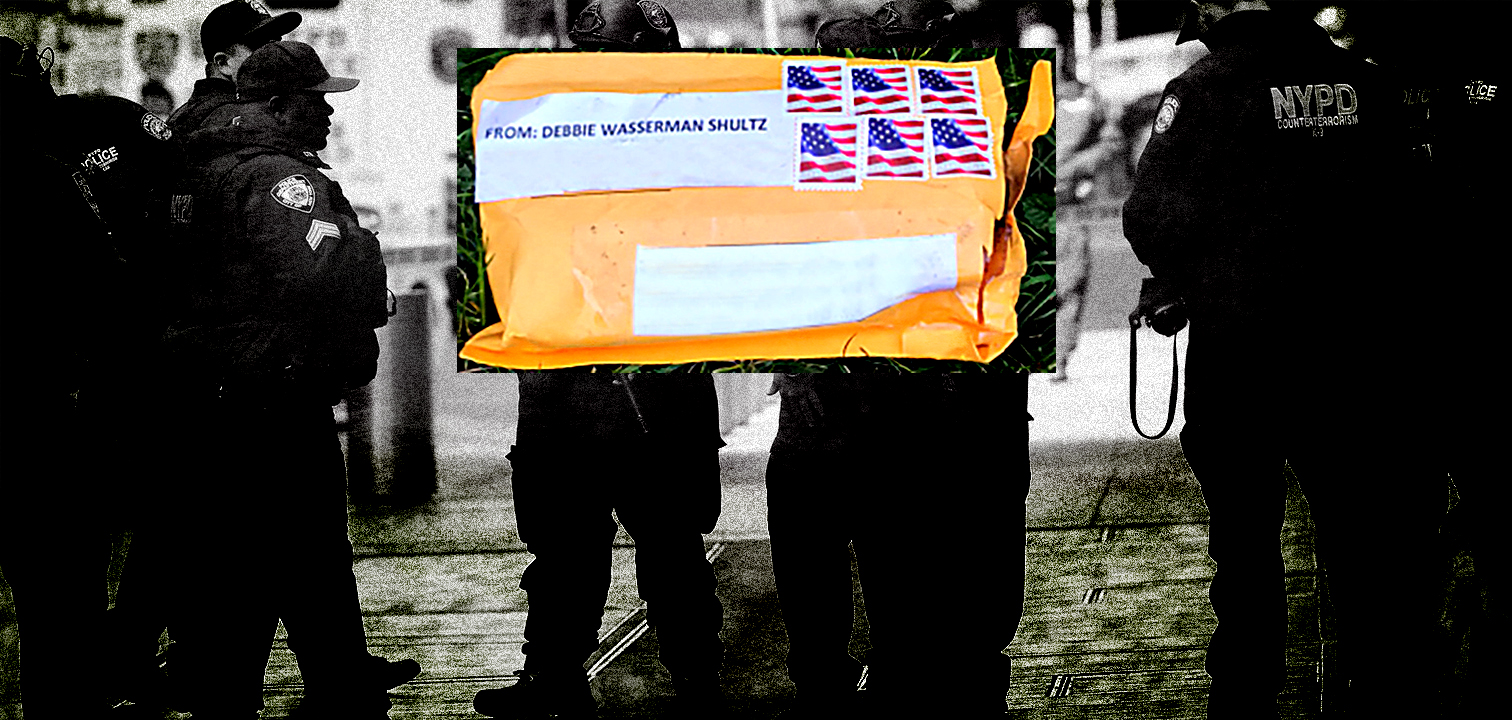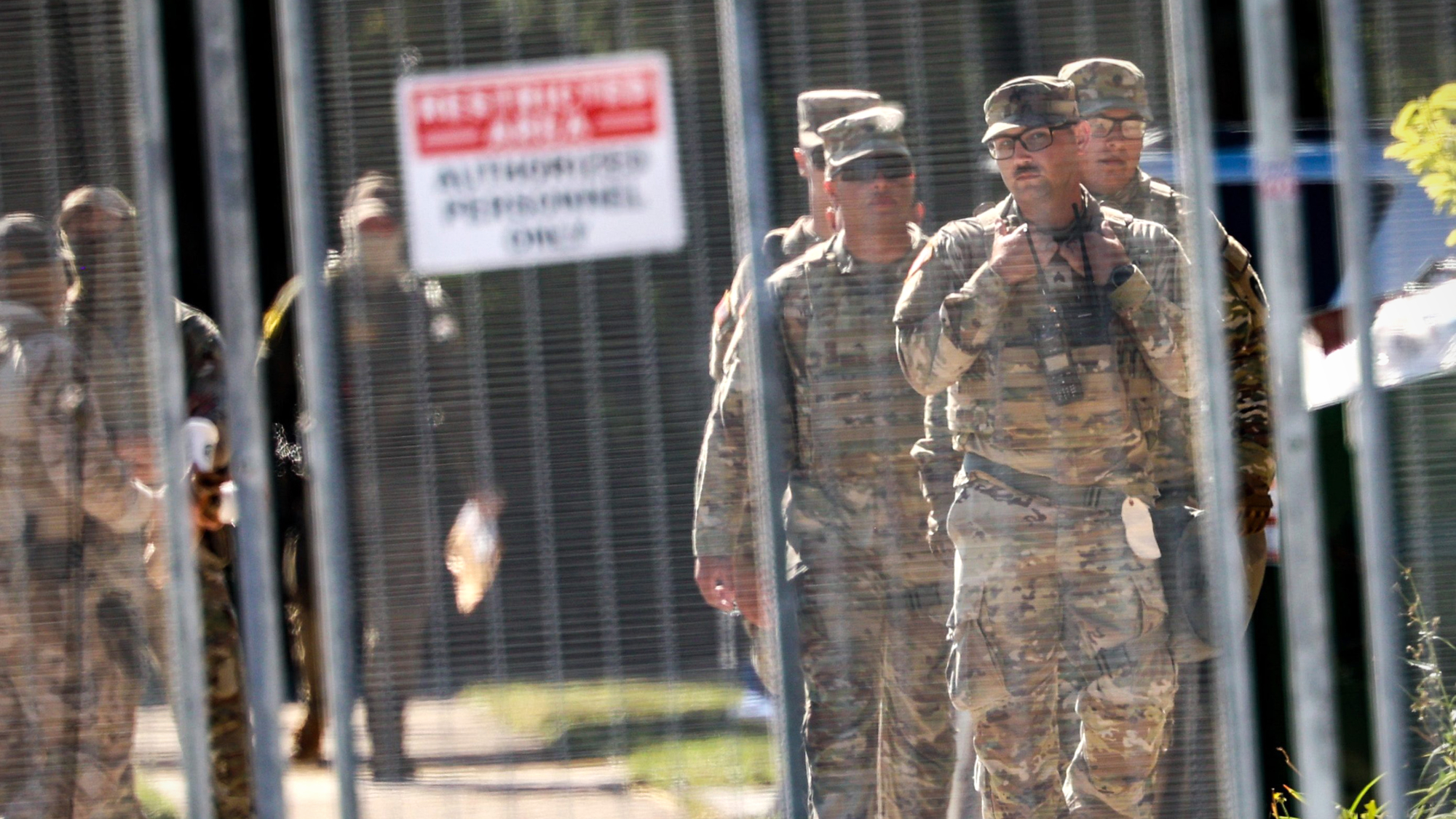When America's verbal violence turns real
On the dispiriting lessons of this week's pipe bomb scare


If the pipe bombs sent through the mail this week to two former presidents, a former presidential nominee, a former vice president, a former attorney general, a former CIA director, a sitting member of Congress, an outspoken actor, and a wealthy philanthropist and activist — all of them Democrats and/or staunch critics of President Trump — had exploded, killing or maiming their targets, this would have been hands-down the single most audacious act of domestic political terrorism, and potentially the single most ambitious act of political assassination, in our nation's history.
Thankfully, none of the bombs exploded. No one was maimed or killed. And so the entire incident has become just the latest in an endless series of polarizing but merely performative political gestures that will most likely disappear down the memory hole a week or a month from now, succeeded by the next outrage and provocation, and then the next, and then the one after that.
Nearly two years into the reality-show era in American politics — a time when the nation's public life has been transformed into a multimedia spectacle in which trolling increasingly takes the place of citizenship — the country is led by a virtual tyrant and tottering on the verge of a virtual civil war. Together we are testing whether the nation can avoid a collective nervous breakdown, as sweeping gestures of outrage and denunciation, calls to incivility and violence, talk of imminent violence, absurd conspiracies, and outright nonsense fly in every direction every single day, encouraged and participated in by everyone from the president on down to unknown freelance (and possibly foreign-funded) provocateurs on social media platforms.
The Week
Escape your echo chamber. Get the facts behind the news, plus analysis from multiple perspectives.

Sign up for The Week's Free Newsletters
From our morning news briefing to a weekly Good News Newsletter, get the best of The Week delivered directly to your inbox.
From our morning news briefing to a weekly Good News Newsletter, get the best of The Week delivered directly to your inbox.
That mailed bombs have now been added to the churning cauldron of anger and vituperation makes perfect sense — just the latest plot twist in the unfolding phantasmagoric national drama streaming on the supercomputers each of us carries around with us in our pockets and purses.
This isn't to minimize or mock the events of this week. We don’t yet know the intent of those who built and mailed the bombs. Were they supposed to inflict serious harm or death but merely constructed ineptly? Or were they deliberate hoaxes meant to troll instead of injure? The fact that at least some of the bombs were accompanied by a parody ISIS flag that included a message ("Get 'er Done") associated with redneck comedian Larry the Cable Guy, along with silhouettes of naked women and sex toys, would seem to point toward the latter.
But either way, none of the bombs detonated. That makes this week's events very different than the multiple acts of political violence that, within living memory, threatened to destabilize the country. In the two decades between 1961 and 1981, three presidents (John F. Kennedy, Gerald Ford, and Ronald Reagan), two candidates for president (Robert Kennedy and George Wallace), and two of the nation's leading civil rights activists (Martin Luther King, Jr. and Malcolm X) were targeted by assassins — with four of them ending up dead.
During the apex of this violence — from the late 1960s through the mid-1970s — America's cities were frequently consumed by looting and fires started by rioting protesters. And left-wing terrorists detonated literally thousands of explosives. In an 18-month period of 1971 and 1972, there were an astonishing 2,500 bombings on American soil. The deadliest single attack took place at a Wall Street restaurant in January 1975 and killed four. All told, 25 people were struck down by the extremist underground during the 1970s.
A free daily email with the biggest news stories of the day – and the best features from TheWeek.com
Nothing remotely like that is happening today from either ideological direction — at least not yet. (The shooting of Rep. Steve Scalise [R-LA] and three others by a deranged left-wing activist at a congressional baseball practice in June 2017 is the only event that comes close.)
What we have instead is mostly verbal violence — hyperbolic expressions of outrage and disgust at ideological opponents, flat-footed and often flamboyantly ignorant historical analogies, and shameless assertions of half-truths and sometimes outright lies from leading politicians and media personalities. And of course, encouraging it all, is the president himself, who denounces and demonizes the press and his political enemies with giddy abandon, often skirting the edges of outright incitement to violence.
Looking back at the real-world tumult of 50 years ago, the most striking thing may be the lack of panic it provoked. Yes, Richard Nixon ran for and won the White House with a campaign promising "law and order," and with the election of Ronald Reagan the political spectrum itself shifted a few clicks rightward for more than a generation. But the surge in violence at the time was real and called out for a measured, mainstream response, which is mostly what these Republicans offered.
What we did not see was widespread hysteria, with television news anchors and large newspapers and magazines stoking the frenzy on a daily basis. And of course there was no internet and no Twitter to serve as a digital megaphone for every political hothead, nihilistic troublemaker, or rank opportunist in the world.
Five decades ago, most Americans managed to keep their heads. But today? This week's non-bombings probably provoked more incendiary commentary than several years of real-world political violence did during the '60s and '70s.
How far can the reality show be pushed before the virtual violence turns real? Stay tuned and we may yet get our answer.
Damon Linker is a senior correspondent at TheWeek.com. He is also a former contributing editor at The New Republic and the author of The Theocons and The Religious Test.
-
 Bari Weiss’ ‘60 Minutes’ scandal is about more than one report
Bari Weiss’ ‘60 Minutes’ scandal is about more than one reportIN THE SPOTLIGHT By blocking an approved segment on a controversial prison holding US deportees in El Salvador, the editor-in-chief of CBS News has become the main story
-
 Has Zohran Mamdani shown the Democrats how to win again?
Has Zohran Mamdani shown the Democrats how to win again?Today’s Big Question New York City mayoral election touted as victory for left-wing populists but moderate centrist wins elsewhere present more complex path for Democratic Party
-
 Millions turn out for anti-Trump ‘No Kings’ rallies
Millions turn out for anti-Trump ‘No Kings’ ralliesSpeed Read An estimated 7 million people participated, 2 million more than at the first ‘No Kings’ protest in June
-
 Ghislaine Maxwell: angling for a Trump pardon
Ghislaine Maxwell: angling for a Trump pardonTalking Point Convicted sex trafficker's testimony could shed new light on president's links to Jeffrey Epstein
-
 The last words and final moments of 40 presidents
The last words and final moments of 40 presidentsThe Explainer Some are eloquent quotes worthy of the holders of the highest office in the nation, and others... aren't
-
 The JFK files: the truth at last?
The JFK files: the truth at last?In The Spotlight More than 64,000 previously classified documents relating the 1963 assassination of John F. Kennedy have been released by the Trump administration
-
 'Seriously, not literally': how should the world take Donald Trump?
'Seriously, not literally': how should the world take Donald Trump?Today's big question White House rhetoric and reality look likely to become increasingly blurred
-
 Will Trump's 'madman' strategy pay off?
Will Trump's 'madman' strategy pay off?Today's Big Question Incoming US president likes to seem unpredictable but, this time round, world leaders could be wise to his playbook



